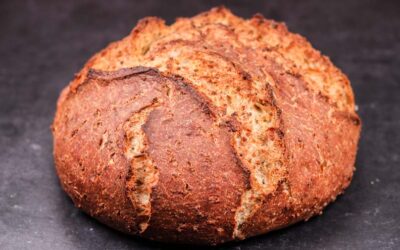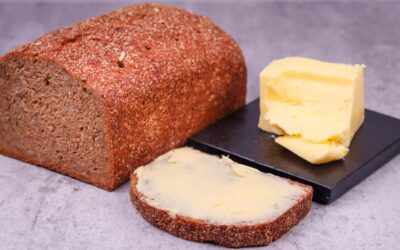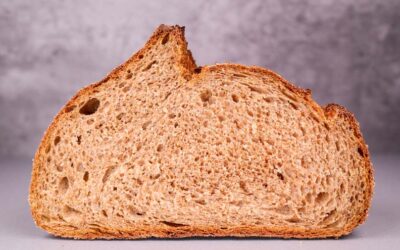Rye bread is my favourite bread of all time and I have mentioned it quite often. But there is someone who loves it even more than I do – my brother.
Appreciation for good food and ingredients that go in it run deep into our culture. So, it is not uncommon for someone who does not cook or bake very often to have a good few recipes of their own. Be it adaptations or their own creations.
My brother eats a lot of rye bread, and he can sometimes bake it several times a week. I was instantly intrigued by his recipe because of one unique quality which is the amount of seeds in it. This bread has more seeds than flour. Because of that it also contains more water than flour. Both make for an interesting thought on what classifies as bread.
For me, this is one of the ultimate breads. High nutritional value, great taste, and awesome keeping quality. It is dense and heavy and will stay fresh for days.
It is a slow fermented dough which takes at least 12 hours at room temperature.
I adapted his recipe to instant dried yeast instead of a sourdough starter. If you want to make it with a starter, then swap the yeast for 50g of active starter and it should rise at about the same rate. Some timing adjustments may be required depending on the conditions in your kitchen.
This recipe makes a 1.25kg (2.75lb) loaf. It will fit in a 900g (2lb) loaf tin.
Watch the video down below for detailed instructions.
Ingredients
For the dough –
350g (12.3oz) whole grain rye flour
70g (2.45oz) sunflower seeds
70g (2.45oz) pumpkin seeds
70g (2.45oz) sesame seeds
70g (2.45oz) linseeds
20g (0.7oz) chia seeds
50g (1.75oz) raisins or currants
8g (0.28oz) salt
0.5g (0.017oz) instant dry yeast or 0.6g (0.021oz) active dry yeast or 1.5g fresh yeast (0.053oz)
420g (14.8oz) water*
*To learn more about dough temperature control click here.
To cover the loaf –
200g (7oz) sunflower seeds
If you are using active dry yeast, then you may need to let it sit in the water for 10 minutes before adding the other ingredients or else it could take a lot longer to raise the dough.
Method
- Grind the seeds. We want the seeds to be part of the dough instead of just floating around in it. Use a pestle and mortar to break the seeds down a little bit. They do not need to be very fine. A food processor can be used but be careful not to pulverize them too much. The finer the seeds the dried the dough.
- In a large bowl combine the water, yeast, salt, and all the seeds. Mix well to dissolve the salt and hydrate the yeast.
- Add the flour and mix to a dough. Smooth out the surface of the dough.
- Roll the dough in the sunflower seeds taking care not to fold the dough. Cover the whole surface.
- Place the dough in a non-stick paper lined baking tin. *Desired dough temperature 23C – 24C (73F – 75F). If your dough is warmer, then it will ferment more rapidly. If it is cooler, then it will take longer.
- Cover and ferment for 12 – 16 hours. There should be clearly visible cracks on the surface of the loaf.
- Spray the dough with water and bake in a pre-heated oven at 180C (356F) fan off for 1 hour.
- Remove the loaf from the tin and place it back into the oven for 30 more minutes. This bread is dense and heavy, so it takes a long time to fully bake. The internal temperature should read above 94C (200F).
- Wrap the loaf in a clean cloth to help it retain more moisture and leave it to cool down completely. I like to rest a bread like this for 12 hours, but you can cut into it after 4 if you can’t wait any more.
Keep in mind that the conditions in each kitchen are different, so fermentation times may vary for you. It is up to the baker to control the bread and react accordingly.
Your oven may be different too, so your baking time may vary.
Watch the video here



